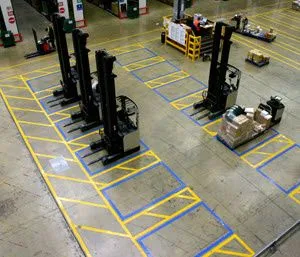Linemarking, while often seen as a straightforward task, can be elevated to an art form with the right techniques and knowledge. Here are some tips and tricks to help you take your linemarking game to the next level:
Preparation is Key:
- Clean Surface: Ensure the surface is clean and free of debris, oil, or moisture. A clean surface ensures better adhesion and a longer-lasting line.
- Weather Conditions: Avoid applying markings in extreme weather conditions, such as rain, high humidity, or extreme heat. Ideal conditions are mild temperatures and low humidity.
Choosing the Right Materials:
- Quality Paints: Invest in high-quality paints or thermoplastic materials that are durable and resistant to fading, chipping, and wear.
- Appropriate Thickness: Select the appropriate thickness of the line based on the specific application and traffic conditions.
Mastering Application Techniques:
- Consistent Speed: Maintain a consistent speed during application to ensure even line width and prevent overlapping or gaps.
- Proper Line Width: Use the correct line width for the intended purpose. Too narrow or too wide can impact visibility and safety.
- Accurate Alignment: Utilize alignment tools, such as string lines or laser levels, to ensure straight and accurate lines.
- Clean Application Equipment: Regularly clean your equipment to prevent clogs and ensure smooth application.
Advanced Techniques:
- Stenciling: Use stencils for complex designs or logos to create precise and visually appealing markings.
- Pre-Marked Tape: Apply pre-marked tape to the surface as a guide for accurate and consistent line placement.
- Thermoplastic Road Marking: Consider using thermoplastic road markings for high-traffic areas, as they offer superior durability and visibility.
Safety First:
- Protective Gear: Always wear appropriate protective gear, including gloves, safety glasses, and reflective clothing.
- Traffic Control: Implement proper traffic control measures to ensure the safety of workers and motorists.
By incorporating these tips and tricks into your linemarking process, you can achieve professional-quality results that enhance safety and aesthetics. Remember, practice makes perfect, so keep honing your skills and experimenting with different techniques.











